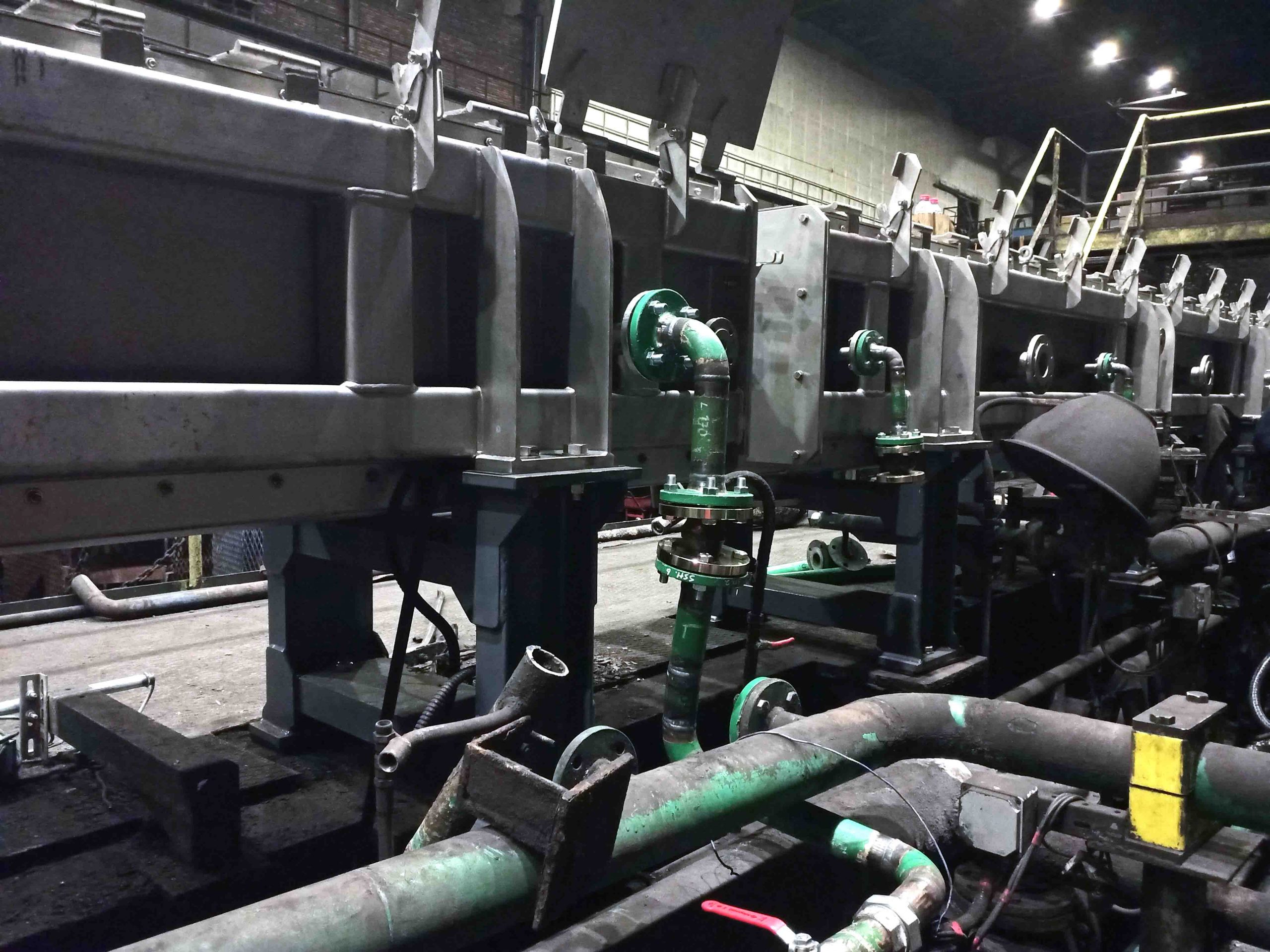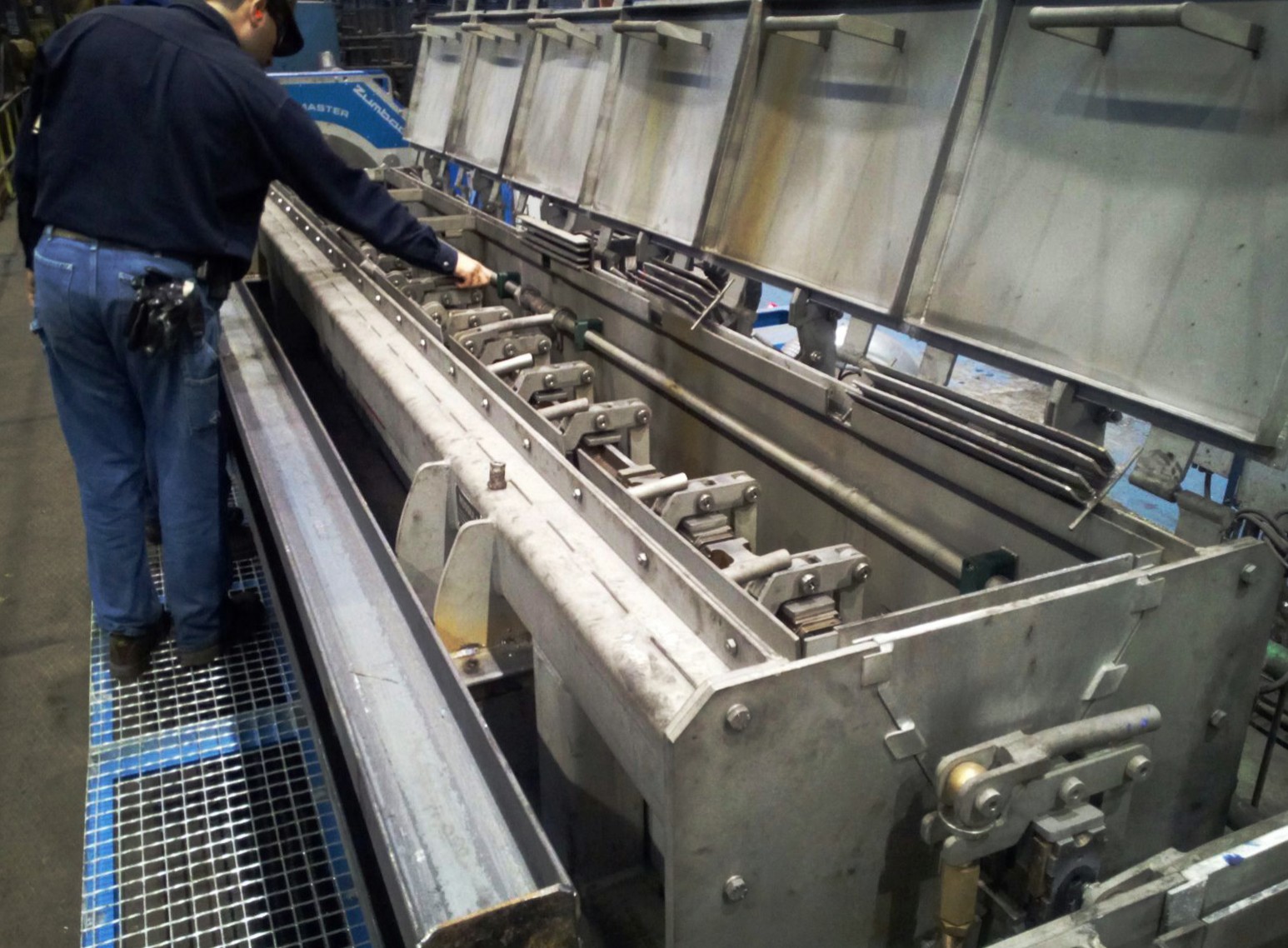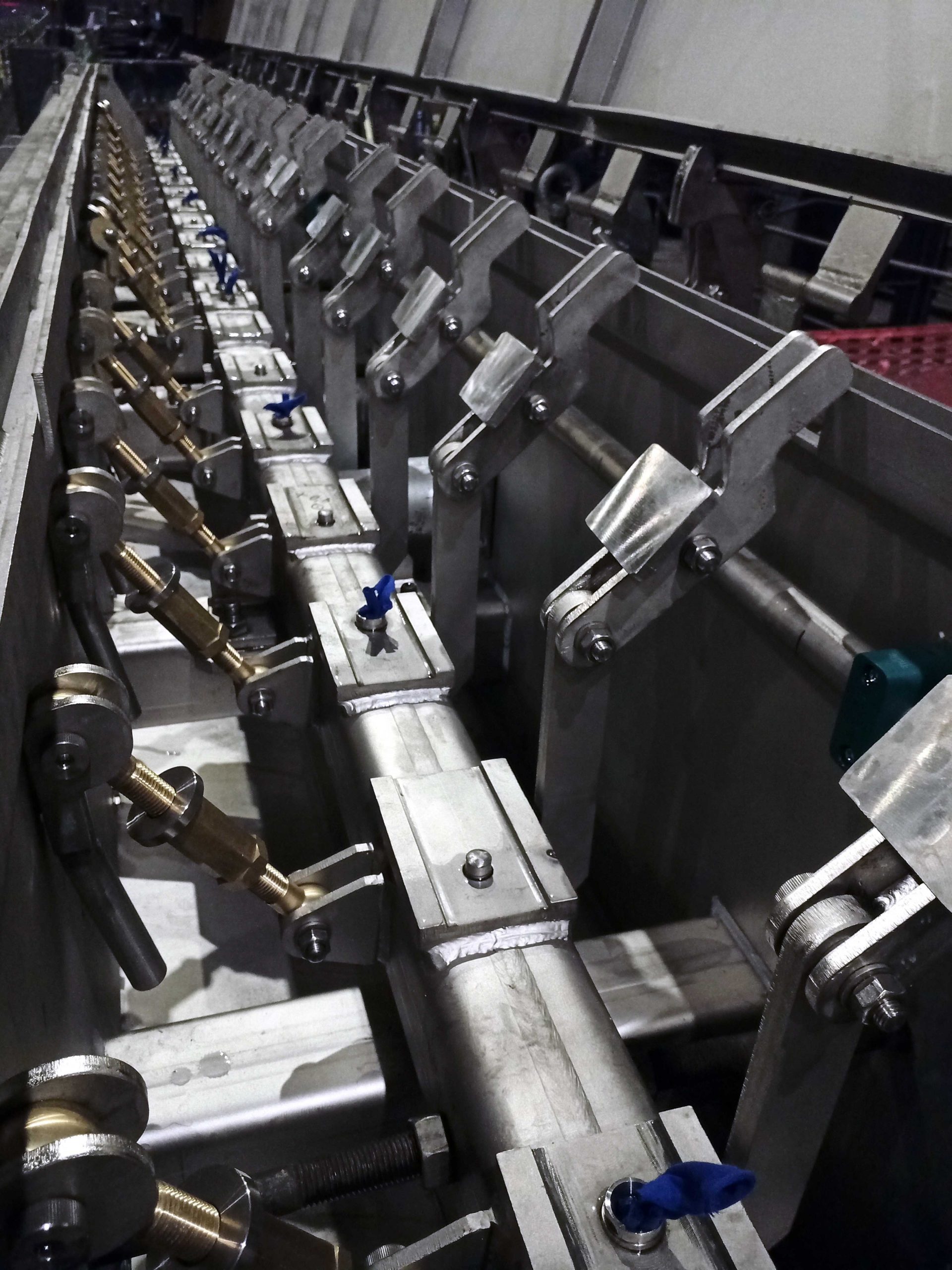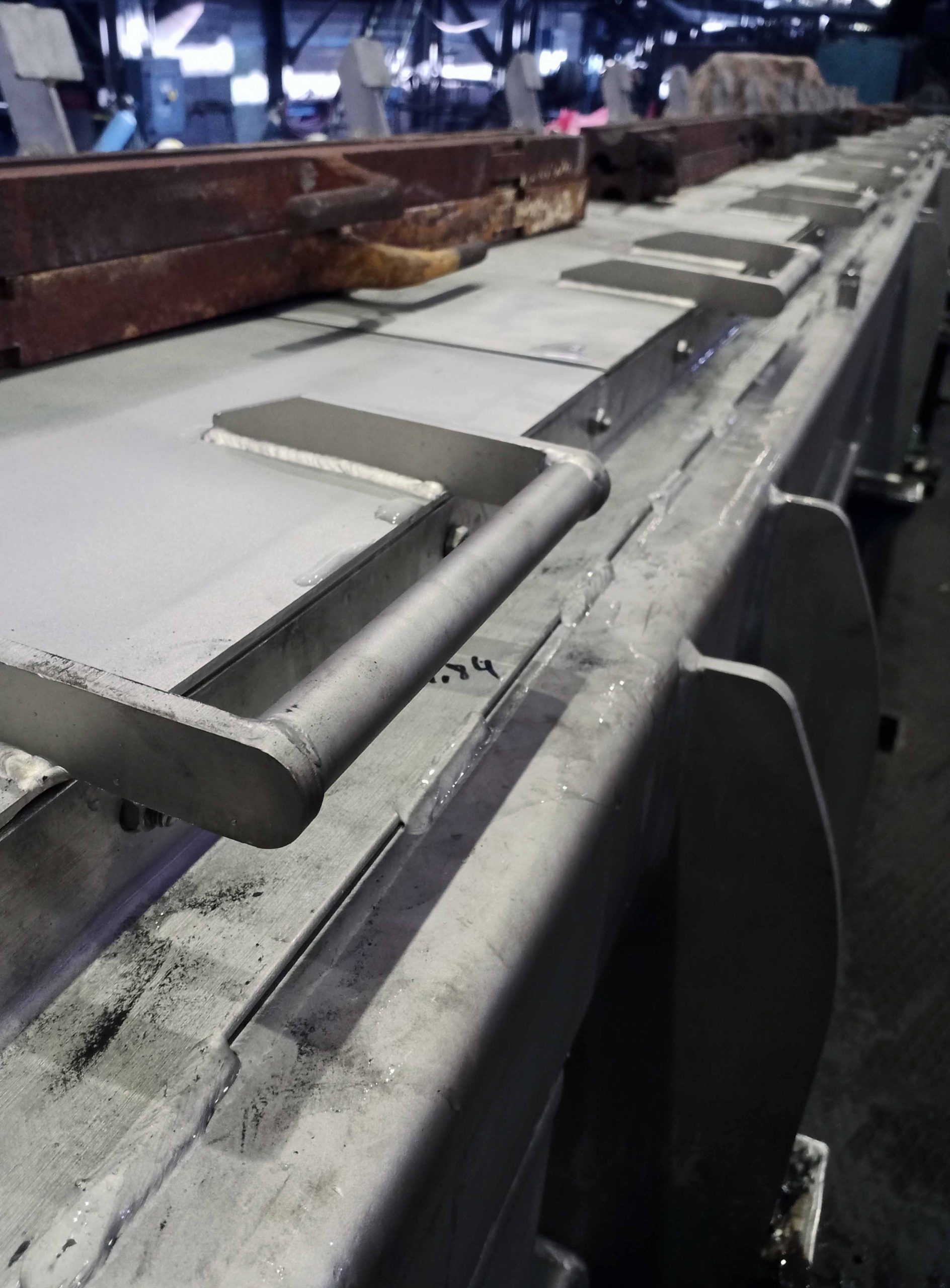Cómo eliminar los defectos del alambrón mejorando la homogeneidad de la temperatura
The Chief Engineer of a large integrated steel producer contacted Russula to help solve a major quality problem they were experiencing in their two-strand wire rod mill. Many of their customers were issuing complaints regarding wire rod fragility. After performing a lab analysis, the chief engineer determined that two types of defects were occurring at the wire rod corner: a non-uniform microstructure in the acicular ferrite region and a longitudinal surface crack from the surface to the center. The plant team determined that the root cause of the metallurgical non-uniformity was because of fast cooling while operating with lower water consumption, however, the cause of the surface defects was unknown at that time.

New water boxes improve wire rod temperature homogeneity
New water boxes installed with minor modifications
After an on-site survey, the Russula team proposed the replacement of the Line A water boxes to improve the wire rod bar temperature homogeneity, which in turn would improve its metallurgical properties.
Since the product mix was the same, water boxes no. 3 and no. 4 were replaced with two new congruent boxes that had the same dimensions and cooling capacity as the existing ones. Only minor modifications were necessary. The existing valve arrangement and field instrumentation were reutilized along with the connections to the compressed air and water. Minor adjustments were made to the existing control and HMI systems as well.

Easy to open lock handles for quick guide change out

Lightweight guides can be easily changed out by one operator
Uniform cooling for a homogeneous temperature profile
The water boxes were sized specifically to cool 5.5-16 mm low carbon, cold heading and high carbon steel grades produced at the plant. Cooling requirements for this product mix dictated the length and water capacity of the water boxes, which had a total water flowrate of 450 m3/h at 9 bars. Three different bore sizes for the nozzles were specified to roll the products shown in the table below. A temperature control module in the control system monitors and controls the stock temperature to ensure the correct properties to roll top quality wire rod.
Water box characteristics (Line A)
- Water box no. 3 length 4050 mm
- Water box no. 4 length 5300 mm
- Max. water flowrate per water box 120 m3/h
- Nozzle bore size for 5.5 – 7.5 mm wire rod 11 mm
- Nozzle bore size for 8.0 – 11 mm wire rod 15 mm
- Nozzle bore size for 11.5 – 16 mm wire rod 22 mm
- Nozzle bore material 17-4PH (AISI 630 SS)
- Water box housing AISI 316L SS
- Maximum rolling speed 86 m/s
Quick guide change-out increases production uptime
The plant has three different sized guides for rolling 5-7.9 mm, 8-11 mm and 11.1-16 mm diameter stock products. The guides are fitted in place with a lock handle. Conventional water box designs may require two people to change out the guides or in the case of one person, using a hook and chain lift. Instead, Russula designed the guides to weigh less than conventional designs, such that one operator can easily open the lock handle and quickly change out the guides to resume production immediately. In addition to improving operability easy-to-remove guides helps in performing maintenance activities.


